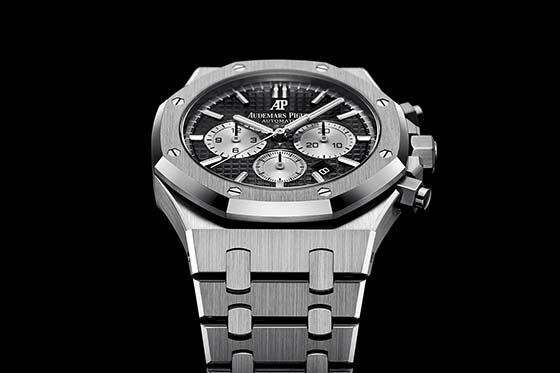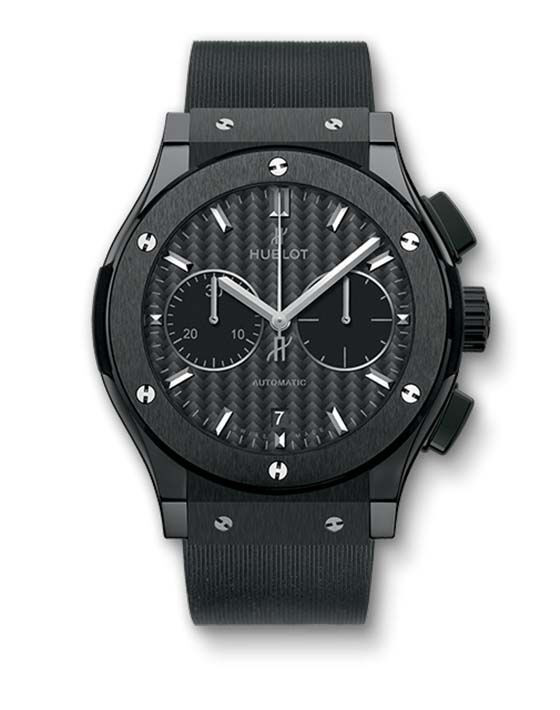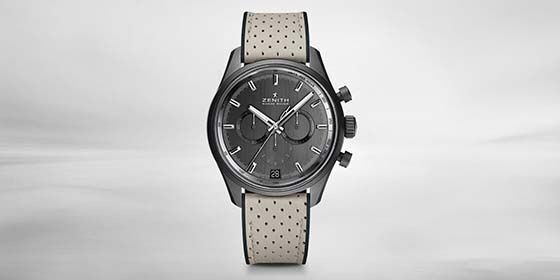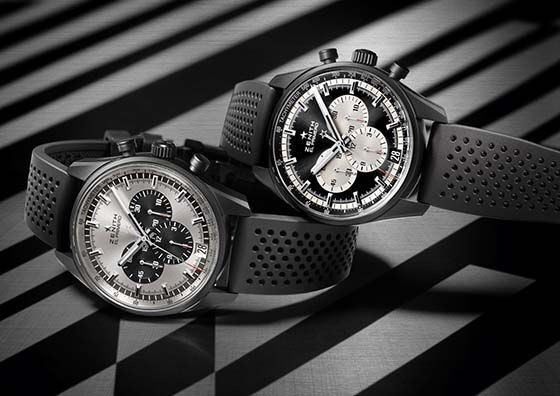How Watchmakers Are Updating Chronological Watches
Sponsored content from Modern Luxury
Of all the horological complications, the mechanical chronograph is surely the one that has played the most active role in the construction of the modern world, whether in science, transportation, industry or sports. Although now overtaken on a practical level by electronic instruments, it remains the most popular supplementary function on a watch, if only for the technical, dynamic atmosphere it creates. Responding to the expectations of their customers and watch connoisseurs, watchmakers are continuously expanding their repertoire, including that of their split-seconds chronographs, considered by many to be as sophisticated a construction as the minute repeater or the perpetual calendar.

Traditional specialties such as the monopusher chronographs are making a comeback, as are instruments equipped with additional measurement scales (tachometer, telemeter and pulsometer). The chronograph is looking to the future as well, with brand-new materials and the quest for ever-greater precision. An increasing number of brands are now developing their own mechanical chronographs, instead of sourcing them from outside suppliers.
The paternity of the chronograph was long ascribed to French watchmaker Nicolas Rieussec, who in 1821 created an instrument that placed a drop of ink on a dial at the beginning and end of each measurement. However, the year 2013 brought a complete upheaval of this established order with the discovery of an 1816 timepiece signed by Louis Moinet — a compteur de tierces or a counter displaying sixtieths of a second by means of a central hand, seconds and minutes on two separate subdials, as well as hours on a 24-hour dial complete with start, stop and reset functions controlled via two pushers.

The year 1838 saw the invention of the split-seconds chronograph, and the first system to reset the hands to zero gained widespread popularity around mid-century. Now equipped with its three main functions (start, stop, reset), the chronograph would become very useful in several domains (science, technology, transportation, the military), and it is not by chance that its rise coincided with that of the industrial society and competitive athletics. During this period the chronograph would also gain several new scales for various measurements: tachometer (speed), telemeter (distance), pulsometer (pulse), etc.
The first wristwatch chronographs made their appearance in 1915. They were equipped, as were the pocket chronographs, with a single pushbutton for all three functions, usually housed in the crown. Breitling designed the now dominant chronograph configuration by adding the first independent pushbutton at 2 o'clock, and then in 1934, another one for resetting the chronograph. In 1937, the Dubois DŽpraz manufacture presented a movement whose chronograph command operated using a cam system — less expensive and less difficult to produce than the traditional column wheel. The system would slowly be adopted by most brands.

In July of 1969, the Speedmaster, from Omega, would accompany American astronauts on their first visit to the moon. That year was also marked by the appearance of the first automatic chronograph movements. The movement developed by the Bren/ Breitling/Heuer-Leonidas threesome in collaboration with Dubois-DŽpraz was a cam movement featuring a modular construction, with an off-centered microrotor (oscillating weight); the one from Zenith, the famous El Primero, was an integrated movement with a column wheel in its central rotor. Thanks to its frequency of 36,000 vph, it was also the first chronograph movement capable of measuring times to one-tenth of a second.
The advent of quartz movements, which were much more precise, was nearly the deathblow for the mechanical chronograph, but the renaissance of mechanical horology in the late 1980s signaled its triumphant return. Let us remember that it is very rare for watch brands to design and produce their own chronograph movements. A large percentage of the chronographs on the market today house an ETA 7750 Valjoux movement, reworked to a greater or lesser degree and sold with differences in price that can be hard to justify. But the situation is beginning to change. The public, better informed on the subject than previously, is more than willing to pay a premium for a high-end chronograph, but on the condition that it is an exclusive movement or at least somewhat original. The Swatch Group’s announcement that it would stop selling ETA movements has also inspired competing brands to look for alternative solutions. For several years, we have been seeing an increase in the number of in-house chronographs featuring interesting innovations.

HOW DOES IT WORK?
The chronograph functions using a complex system of levers, springs and wheels. The chronograph mechanism is grafted onto the movement’s base. When the start pushbutton is pressed, the chronograph wheel joins the wheel for the seconds, and the hand starts ticking. When the chronograph is stopped, the chronograph wheel separates from that of the seconds, and the chronograph hand stops again. The reset function is effectuated by a system of a hammer on a spring and a heart.
Split-seconds chronographs are equipped with an additional seconds hand, which can be stopped independently to measure a split time or a reference time. They are recognizable by the additional pushbutton they bear. Activating the pushbutton is all that is needed for the split-seconds hand to catch up with the main chronograph hand, so that the two may continue running together.
There are two kinds of chronographs with respect to the control group governing the start, stop and reset functions. The chronographs considered the most prestigious are equipped with a column-wheel, a complex organ that uses a system of slots and tabs to govern the movements of the levers. Most current mechanical chronographs are equipped with a cam system of simpler construction.
In modular constructions, the chronograph mechanism is totally independent of the base movement. It is mounted on an additional plaque affixed to the dial side of the movement. This solution allows the watchmaker to link a chronograph mechanism to an existing movement, without having to develop a new caliber. In integrated constructions, the chronograph components are placed directly on the movement, on the bridge side. Column-wheel chronograph movements are the result of integrated constructions.
The precision of time measurement and display of a mechanical chronograph depend on the frequency of its regulating organ, i.e. the number of vibrations per hour (one oscillation equals two vibrations) of the balance-spring. The higher the frequency, the smaller units of time that can be measured.
The flyback function allows the wearer to instantly start a new round of timing while the chronograph is already operating. For this, one need only activate the reset pushbutton, without stopping the hands first; all three chronograph hands will immediately return to zero to start another measurement.
The term "jumping seconds" refers to a setup in which the second hand leaps around the dial in one secondÑusually in four or five smaller steps. This system is a way to measure and display times of one-fourth, one-fifthÑeven one-eighth or one-tenth of a second.
The word chronometer is often used incorrectly to designate a chronograph, but they are two very different things. A chronometer is a watch whose movement has received an official certificate attesting to its extreme precision. This certificate is awarded by the COSC (Swiss Official Chronometer Testing Institute) after two weeks of very rigorous testing. A chronograph may be a certified chronometer, but it is by no means certain that any given chronometer will also be a chronograph.





















